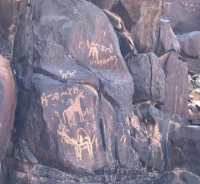
Ad-Dawadmi Governorate is one of the governorates in Riyadh Province, rich in rock drawings, writings, and inscriptions. The area is home to numerous sites dating back to the Paleolithic, Mesolithic, and Neolithic periods. Among the rock art and inscriptions in the governorate are: Masel al-Jumh Mountains Site Two historical inscriptions written in the Sabaean script were discovered at this site. The first inscription belongs to King Abu Karib As'ad, one of the Himyarite Tubba kings, and d...
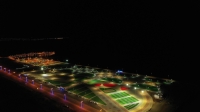
Al-Sehi Site or Sehi Site is an archaeological site located in the town of Sehi, affiliated with Sehi Center in Samitah Governorate, Jazan Province , Kingdom of Saudi Arabia. It is situated twenty-eight km southwest of Samitah Governorate on the coast of the Red Sea. It is considered one of the important archaeological sites in the south of the Kingdom, with a history dating back more than three thousand years. Documentation of al-Sehi Site Al-Sehi Site was documented and recorded by archaeolog...
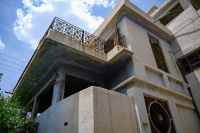
Al-Dahlawi Palace is one of the historic palaces in Taif Governorate , Makkah al-Mukarramah Province , located in the western part of the Kingdom of Saudi Arabia. It was built in 1896. The palace is situated west of the central area in the Qarwa Neighborhood of Taif. It consists of three floors with four facades, designed in the Hejazi architectural style, incorporating Islamic engineering and decorative arts. Elements of al-Dahlawi Palace The primary building material used for al-Dahlawi Palac...

Caves and Harrat in Hail Province are archaeological sites that distinguish this area in the northern Kingdom of Saudi Arabia. These historical landmarks include over ten discovered caves and twelve volcanic craters to date. Notable caves and harrat in Hail Province In Hail Province, there are archaeological sites in caves and traces of volcanic activity. Among the prominent are Janin Cave and Sha'afan Cave, located on the edge of Harrat al-Nar. Sha'afan Cave is one of the largest cav...
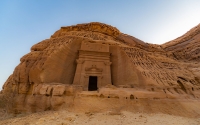
Hijr (Mada'in Salih) is located twenty km north of al-Ula City in al-Madinah al-Munawwarah Province , northwestern Kingdom of Saudi Arabia. Due to its rich history, Hijr was registered as the first Saudi site to be included in the United Nations Educational, Scientific, and Cultural Organization ( UNESCO ) World Heritage List in 2008. Hijr is the largest preserved site of the Nabataean civilization and the southernmost point of the Roman Empire. It serves as a testament to the Nabataeans&#...

Ibn Rumman Palace is a historic palace located east of Tayma' Governorate in Tabuk Province , northwest of the Kingdom of Saudi Arabia. It served as the historical residence of the ruler of Tayma' Emirate and his family, along with various facilities. The palace's construction dates back to the seventeenth century, with the main palace being added between 1916 and 1919. Ibn Rumman Palace witnessed significant historical events that impacted the life of the town and its inhabitant...
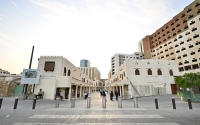
Jeddah dates back to the pre-Islamic era, and during the Islamic era, Caliph Uthman Ibn Affan (may Allah be pleased with him) designated it as the port for Makkah al-Mukarramah in the year 647. Qabil Street, located in the historical Jeddah area, is considered a prominent street. Since 1940, it has contributed to making Jeddah a city of finance and economy, serving as a witness to the city's transformation and development through its market with small shops. One of the landmarks of the str...
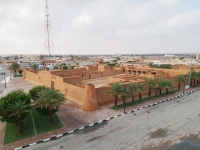
Many heritage and archaeological sites are spread across the governorates of Northern Borders Province in the Kingdom of Saudi Arabia, including: King Abdulaziz Palace in Linah It was built in 1935 in Linah Center, located about one hundred km south of Rafha Governorate . Constructed from mud bricks, clay, and stones, it features circular towers at its corners and a spacious courtyard overlooked by the palace's Majlis (guest reception area), rooms, and facilities. The Emirate Palace in Ar&...
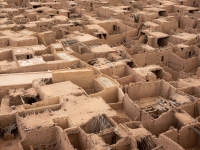
The establishment of the old town of al-Ula in its current form, located in al-Ula Governorate in al-Madinah al-Munawwarah Province , dates back to the tenth century. The town was inhabited until about eighty years before the establishment of the Kingdom of Saudi Arabia. Today, visitors can explore the maze-like town built of mud bricks and surrounded by a mud wall. The history of civilized settlement in the old town of al-Ula dates back to the Stone Age. The land is fertile and abundant in fre...
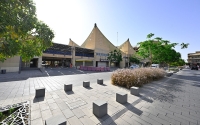
Al-Muʼaykaliyah Neighborhood or Hillat al-Muʼaykaliyah is one of the old neighborhoods of Riyadh City . The neighborhood was historically known for housing several palm groves, the most famous of which was the grove of Mohammed Bin Mu'aykal, one of the military leaders during the reign of Imam Faisal Bin Turki. The neighborhood was named after him following the clearing of those groves and the expansion of the neighborhood. Borders of al-Muʼaykaliyah Neighborhood Al-Muʼaykaliyah Neighb...
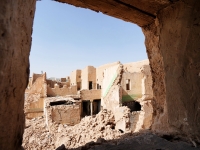
Al-Dirah Neighborhood is a heritage neighborhood located in Riyadh City, the capital of the Kingdom of Saudi Arabia. It is one of the neighborhoods that formed the old city in central Riyadh, featuring a number of houses, mosques, streets, and squares built according to the urban style of the city. Al-Dirah Neighborhood buildings The houses and palaces in al-Dirah Neighborhood were built from mudbrick and clay, and adorned with numerous decorative and architectural elements. A typical mudbrick ...
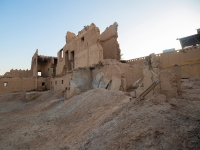
Al-Shamsiyah Palace, also known as the Palace of Princess Nourah bint Abdulrahman, is a historic palace located in Riyadh , Kingdom of Saudi Arabia. It is situated on the western bank of Wadi al-Batha, near al-Murabba Neighborhood. History of al-Shamsiyah Historical Palace The construction of al-Shamsiyah Palace dates back to 1935 when King Abdulaziz Bin Abdulrahman Al Saud ordered its construction for Prince Saud Bin Abdulaziz Bin Saud Bin Faisal al-Kabir and his sister, Princess Nourah Bint A...